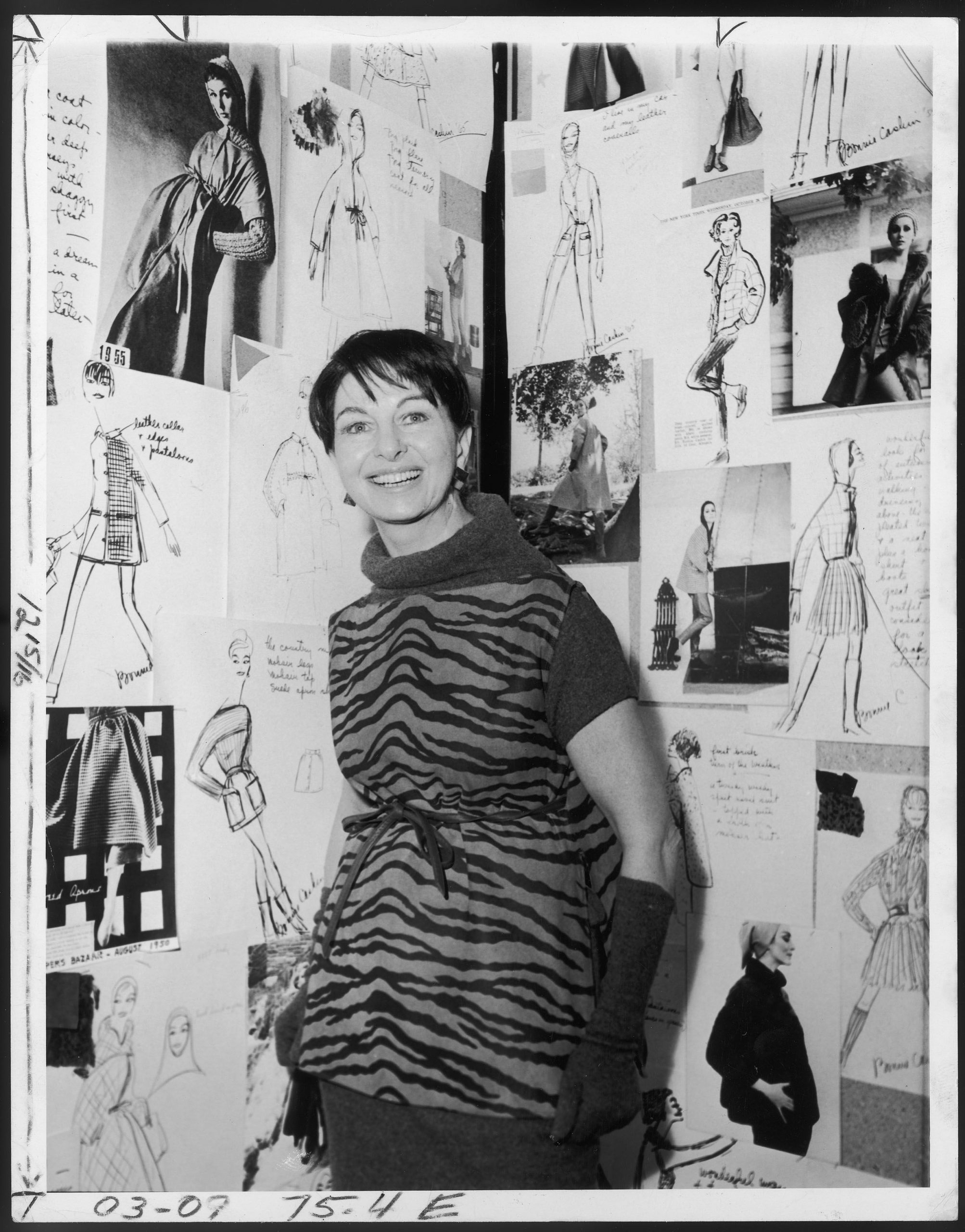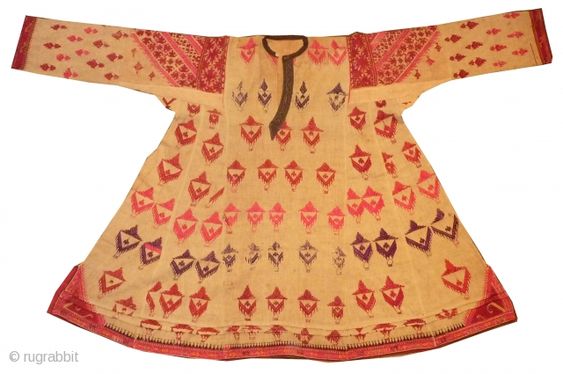
by Gwyn Conaway
I have recently fallen back in love with the ever personal, exhaustively practical designs of the worldly Bonnie Cashin. From ballet costumes to uniforms for servicewomen during World War II to Coach, there’s no doubt she has had a far-reaching influence on our culture.

Bonnie Cashin wearing a wool zebra-striped tunic, early 1960s.
A staple of American design, Cashin is most known for pioneering the sportswear culture we now thoroughly enjoy. But her work has been far more diverse than one is led to believe. She lends a worldly view to American design, and explores other cultures through silhouette and textile alike. Let’s explore her inspirations and creations.

In 1960, Bonnie Cashin visited South Korea. Here she dons a gat, a black horsehair wide-brimmed steeple hat which is traditionally worn by noblemen and scholars during the Joseon period. Perhaps this foreshadows her interest in symbols of status and power.
I would be remiss to not first introduce Cashin’s most recent invention, the Blanket Coat, an evermore popular trend that will most assuredly be in style for a decade or more. While at first, the Blanket Coat seems to follow the boxy trapeze cuts ubiquitous in fashion, it does so from a long-informed fascination with the shapes and details of other cultures. This style, derived from her recent interest in the Japanese kimono, departs from the expected silks and linens and turns instead to delicate, fuzzy mohair wool which softens the look. Bold colors and patterns, though not directly derived from kimono, are inspired by Eastern color schemes, which at first glance create discord to the eye but settle into a harmonious and energetic palette.

Blanket Coat, 1965. While the bright yellow and pink palette of this coat may be jarring at first, it's worth noting that this is the color palette of a young unmarried Korean woman's hanbok.
Her interest in kimono doesn’t stop there. Recently, she released experimental suits of tweed wool. These curious pieces portray Cashin’s devotion to character and story. Note the kimono displayed traditionally on a wooden pole, in comparison to the angular shoulders of Cashin’s design. I was floored by Cashin’s clever jab: that women are often the dressings of the room. This silhouette lends the woman’s tapestry its own agency, thereby freeing the woman from conventional expectations.

This particular silhouette rose in Cashin's fall/winter 1964-1965 season. The kimono pictured right is made of rinzu silk, circa 1800-1840.
Beyond silhouette, textiles also play a bold role in Cashin’s creative expressions. Cashin looks to symbols of power and translates them into womenswear. Born in 1908, before women’s suffrage (embarrassingly, we’ve only had the right to vote for forty-five years) and witness to the bravery of women at war, I can’t help but surmise that Cashin’s designs are for women with strength of character. (On the ethicality of appropriating symbols of power from other cultures, I tend to believe it’s best to leave them in the hands of their successors. However, after centuries of Western fashion committing the same fashionable faux pas, I doubt there will be an end to this design philosophy anytime soon.)
A perfect example of this is the wool coat below. Closely resembling Kente cloth, a woven textile worn by powerful men and women in many African nations, the coat takes on more meaning. These types of cloth have many different meanings and patterns, depending on the culture of origin. Here we see Cashin calling to what might be termed a “Primitive” pattern today, but what in reality is the cloth of kings and queens. I appreciate the poetry of a misrepresented textile being used in womenswear, as women are so often misrepresented and underestimated.

Left, Cashin's tweed wool and suede car coat. Center and right are images of Prestige Kente and Ewe Kente cloth from Ghana. Kente cloth is also utilized in countries like Nigeria, and printed onto Dutch wax cloth, the textile used to create their elaborate headwraps. Cloths like these were traditionally reserved for the most powerful people in the community.
Perhaps one of her riskiest forays into cultural design is her dive into Native American and Pakistani design. While she commonly uses suede in her styles, she takes her “Indian” inspirations much further in the design below. She is clearly inspired by Pakistani Ikat, or perhaps Swat (a type of wedding dress), silhouettes that share the trapeze torso and dolman sleeves so popular in the West now. She also pushes suede to new heights in this series, incorporating fringe and cosmic designs akin to the origin stories of Native tribes in the American plains.

Cashin's designs, labeled Indian Summer and Indian Territory (left to right). Note the fine suede leather and fringe, indicative of the American native nations, which wore deerskin and suede rather than cloth due to tall grass. Meanwhile, the shape of the top's design (pictured right) is reminiscent of Indian ikat or swat dresses. Cashin combined both "Indian" inspirations to make this look.

A Pakistani Swat dress of the 19th century. Swat are traditional wedding dresses in the Bengal region. Cashin's inspiration may also have come from an ikat-style tunic, dress, or coat. These are sometimes referred to as ikat kurta, and can be found across Uzbekistan, Nepal, Pakistan, and northern India. Note how the underarm is round, thanks to a gusset. This detail, among others, is emulated in Cashin's design above.
In short, Cashin’s worldly aesthetic lends power to the American woman. It’s well-known that she designs with the modern woman in mind: mobility and urbanity above all others. Despite her lightning-quick career and successes, she doesn’t allow herself to stick her nose in the fashion industry and keep her head down. Rather, she looks up at the world around her in search of true character and strength.
It's no wonder that the modern woman, so eager to explore the world and carve out her place within it, is entranced by Cashin's designs.
[Come join us at Portal 55, Galactic Journey's real-time lounge! Talk about your favorite SFF, chat with the Traveler and co., relax, sit a spell…]

![[October 16th, 1965] The World According to Bonnie Cashin](https://galacticjourney.org/wp-content/uploads/2020/10/69b37edc295dde7c6eead66b33f10802-672x372.jpg)
